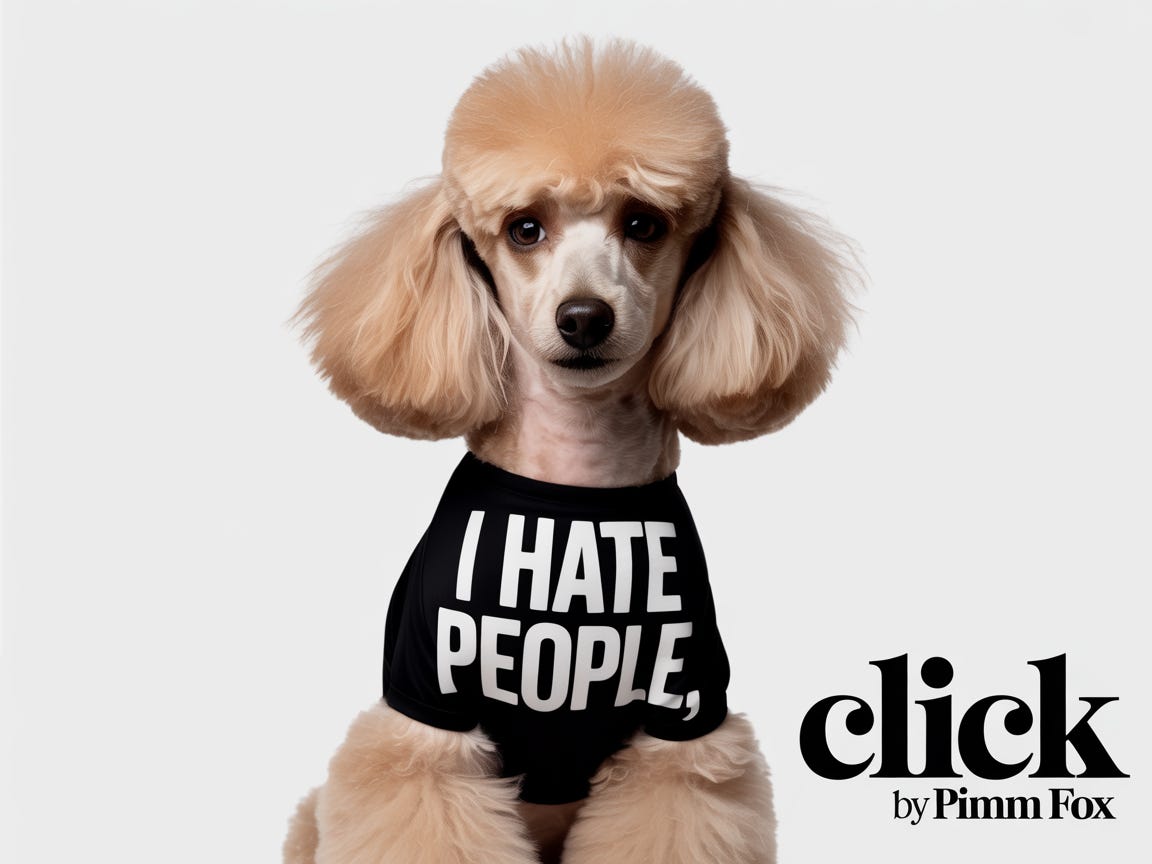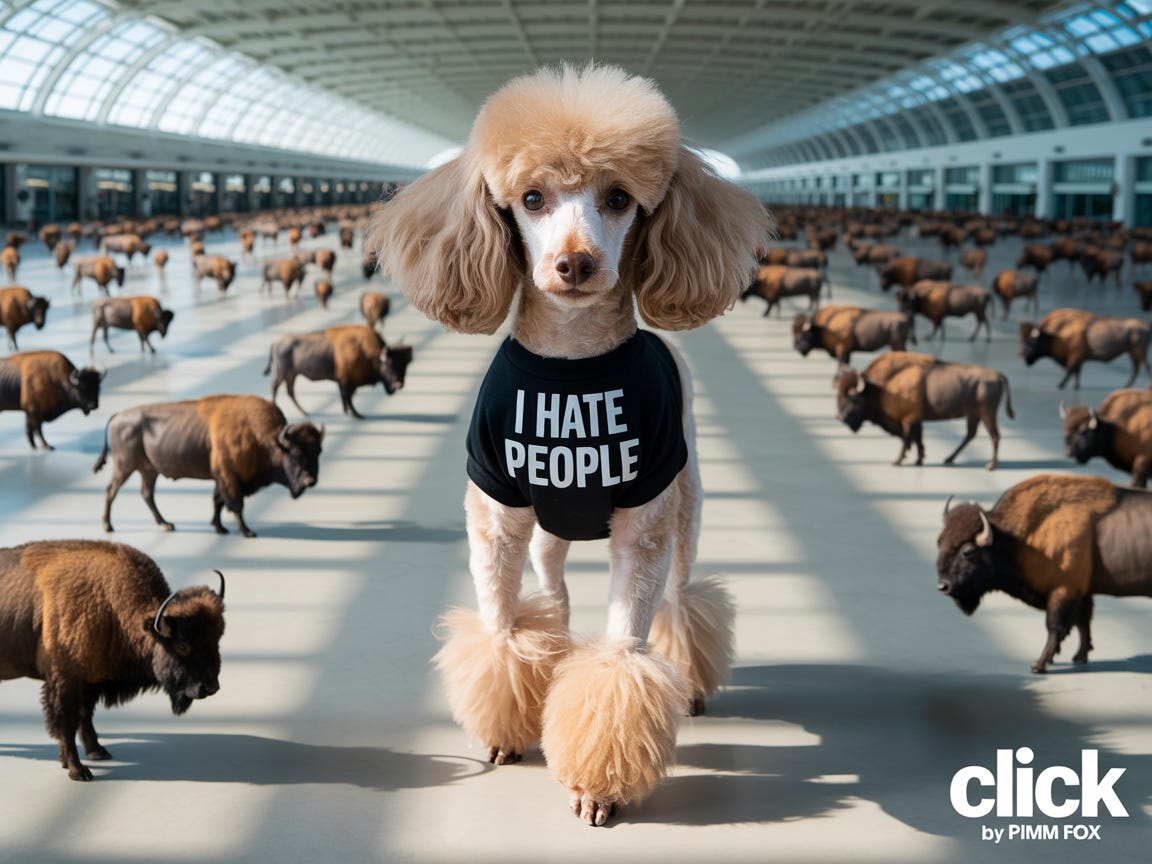It begins innocently enough. You see someone wearing a black T-shirt with bold, sans-serif white letters proclaiming, “I HATE PEOPLE.” You chuckle. You nod. You think, same. Then you realize you’re the person standing closest to them. Are you “people”? Or are you a person? And therein lies the twisted majesty of the shirt: a declaration of misanthropy worn with the casual confidence of someone waiting in line for bubble tea.
Let’s clarify this essential distinction for our mutual survival: a person can be charming. A person might help you move a couch. A person will subscribe to your Substact. A person will pretend they didn’t hear you singing Taylor Swift off-key in the Trader Joe’s aisle. A person is bearable.
But people?
People are a congealed mass of humanity emitting Wi-Fi complaints, public flatulence, and opinions about crypto. People travel in herds through airports like confused buffalo. People turn meetings that should be emails into symphonies of throat-clearing, PowerPoints, and passive aggression.
We love you, individual person reading this, with your unique DNA and that little thing you do with your eyebrows. But people—your collective, your genus, your cohort of flesh and indecision—are the reason we Google “how to build a cabin with no internet.”
Wearing an “I HATE PEOPLE” shirt is not a cry for help. It’s a public service announcement. It’s the polite, cotton-based way of saying: “If you’re thinking of starting small talk about how the weather is weird this summer, please don’t.” It’s the social distancing of the soul.
And don’t be fooled—it’s not about hatred. It’s about preemptive emotional triage. One person can disappoint you. But people? People will organize a brunch, make you wait 45 minutes for eggs, discuss the macroeconomics of oat milk, and split the bill wrong. People will leave shopping carts in parking spaces like a message to God: “We have given up.”
Yet the shirt itself is ironic, almost tragically so. Because to wear “I HATE PEOPLE” is to engage with people. Someone printed that shirt. Someone sold it. Someone said, “Yesss, get that in a medium, it’s so you.” The irony is that it’s a fashion choice that requires society to exist. You can’t hate people alone. That’s just called camping.
And still, there’s beauty in this contradiction. The shirt doesn’t say “I hate you.” It says “I hate you, plural.” The crowd. The mob. The inexplicable group of 14 people who all stop in the middle of the sidewalk simultaneously to check Yelp. You? No. You’re fine. You’re not the problem. You’re just unfortunately adjacent to it.
In fact, the shirt-wearer is usually the same person who will rescue your cat, hold the door, or explain the ending of a confusing movie. One-on-one, they’re delightful. But increase the headcount to three or more, and they retreat emotionally like a turtle hearing a group Zoom breakout is starting.
The truth is, we all oscillate between loving individuals and fearing gatherings. The same way we adore puppies but dread a kennel. One child is adorable; thirty is a field trip sponsored by regret.
So next time you see someone wearing that shirt, don’t be offended. Instead, thank them. They are saving you from small talk about fantasy football. They are protecting you from joining their pyramid scheme. They are shielding you from becoming part of the statistical group known as “people who ruin elevators by pressing all the buttons.”
Because deep down, the “I HATE PEOPLE” shirt is not about hate at all. It’s about boundaries. It’s about the modern, fabric-based equivalent of a moat. It’s about liking you just enough to not want to know your friend group.
So wear it proudly. It tells the world, ‘I came, I saw, I’d like a refund.









Is it an oxymoron to say I love, “I Hate People”?